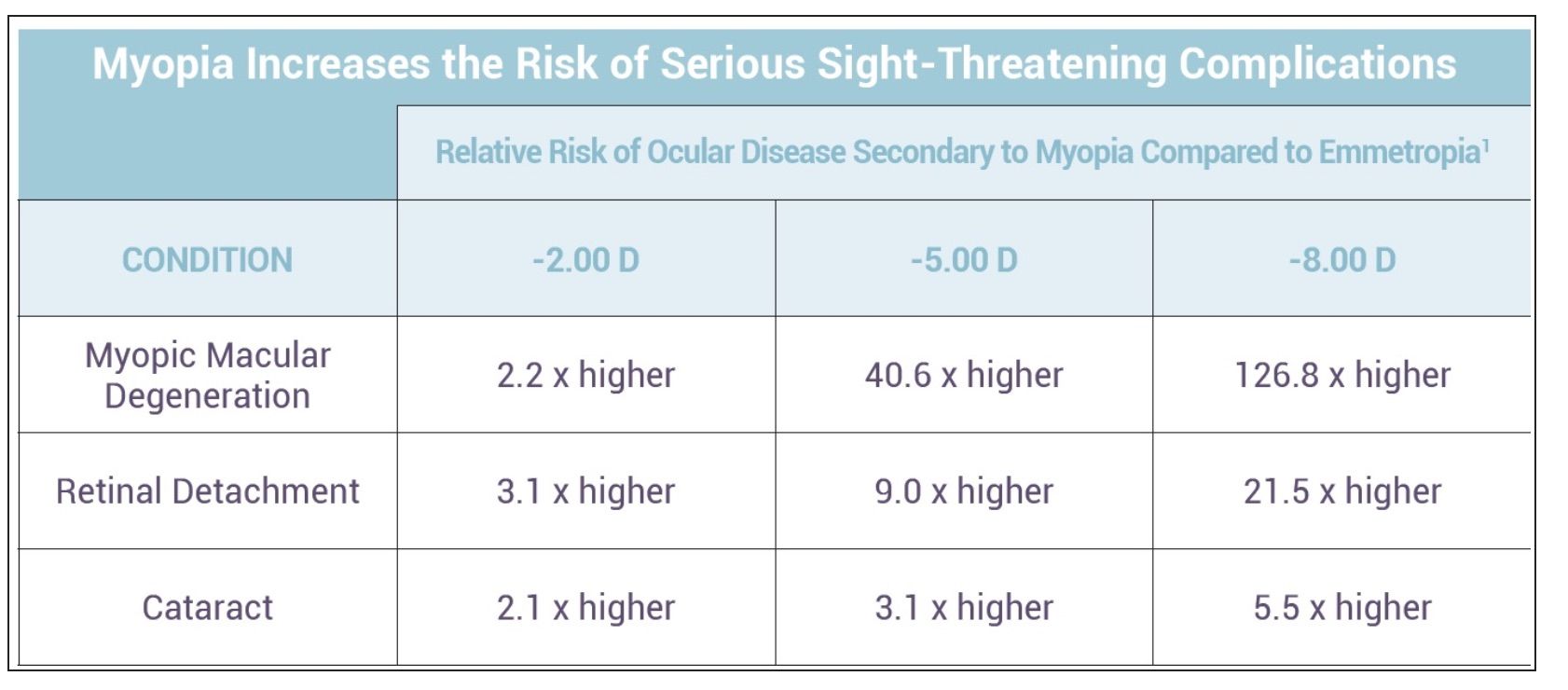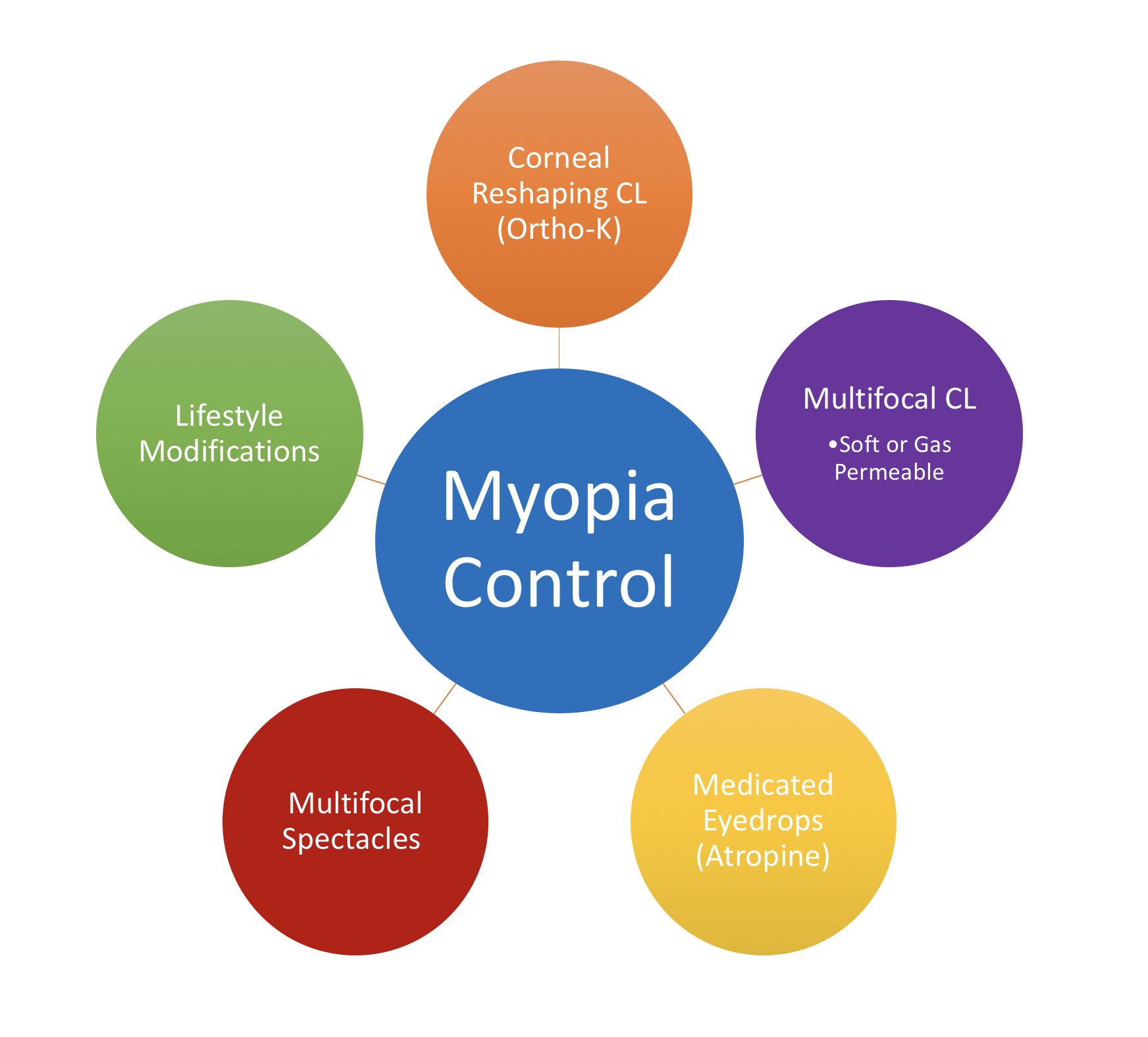Office Hours
- Monday8:00 AM to 5:00 PM
- Tuesday8:00 AM to 5:00 PM
- Wednesday8:00 AM to 5:00 PM
- Thursday8:00 AM to 5:00 PM
- Friday8:00 AM to 4:00 PM
- SaturdayOpen Select Saturdays from
8:00 AM - 2:00 PM - SundayClosed
Myopia occurs when there is an increase in the length of the eyeball, causing light to focus in front of instead of on the retina, creating blurring. If not corrected, this blurring causes further increase in the elongation of the eye and increasing myopia. Research over the 1st 30 years has proven an association between myopia and close work in conjunction with fewer hours spent outdoors.
Most eye care providers are seeing a dramatic increase in the rates of childhood myopia in this country. According to a 2018 survey from the AOA, more than 40% of Americans are myopic, up 25% from only 40 years ago. One in four American parents has a nearsighted child and 75% of these children were diagnosed between the ages of 3 and 12. In China, a 2018 survey of 1 million students between ages 12 and 14 found that 72% had myopia, up from 58% in 2010. Urban areas were more affected than in rural areas.
The shift towards younger-onset is linked to faster progression and may lead to the increasing severity of myopia. Higher levels of myopia have a greater risk of serious medical complications over time, including increased risk for glaucoma, retinal detachment, earlier onset of cataracts, and myopic macular degeneration. Early intervention can reduce the progression of nearsightedness.
Excessive time indoors looking at screens is a definite risk factor. Time outdoors appears to have a protective effect against the onset of myopia, with two hours per day spent outside recommended for best results for children. During this time of increased online learning, it will be difficult to moderate screen use, but making sure that breaks are scheduled and screens are kept at a distance can help and, when it becomes possible eye examinations.
Use of atropine drops
Progressive soft contact lenses
Progressive spectacle lenses
Orthokeratology, using specially designed rigid contact lenses overnight to reshape the cornea
20/20/20 Rule - Every 20 minutes, look at something 20 feet away for 20 seconds.
Frequent breaks
Time outdoors
Did you know that it may be possible to slow the progression of your child’s nearsightedness (myopia)? Higher amounts of nearsightedness carry a risk of glaucoma, retinal detachments, and retinal degenerations for some patients.

Flitcroft, D. I. (2012). The complex interactions of retinal, optical, and environmental factors in myopia aetiology. Progress in retinal and eyeresearch, 31(6), 622-660. Cited from myopia management to treat or not to treat.
The World Health Organization, the American Academy of Optometry, and the American Academy of Ophthalmology all acknowledge that the prevalence of myopia is increasing and that controlling myopia is an important public health concern. These same organizations recognize that a number of treatment options have been shown to slow the progression of myopia in some children. These methods include:

The appropriate myopia control strategy for your child depends on the many factors. We work carefully with families to develop the best options for your child and options that will work with your family's busy schedule. Because there is an increased prevalence of dry eye in young people due to screen use, we leverage our Dry Eye Center of Excellence with its advanced resources to detect and address this potential problem before symptoms of contact lens intolerance interfere with efforts at myopia control.
Current Prescription
Rate of Progression
Family History/Genetics Time Spent with Near Work Time Spent Outdoors Binocular Vision
Dry Eye Symptoms
Ability to Wear Contact Lenses
The doctors at Korb & Associates have both clinical and research expertise in the area of myopia control and complex contact lenses, increasing the efficiency with which we can develop a comprehensive program that has the best chance for success.